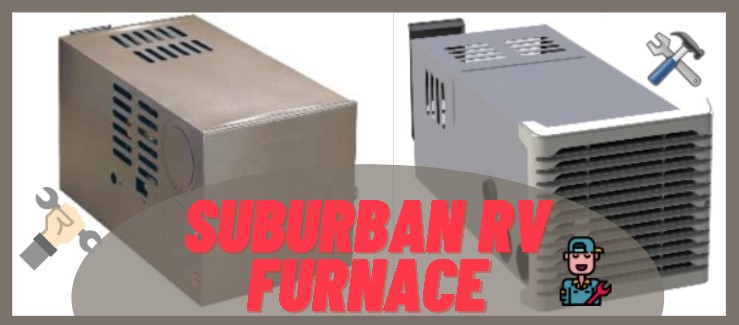This guide is on Troubleshooting a Suburban RV Furnace. While it's a bit of a mouthful, this guide will help you troubleshoot any problems with your suburban RV furnace. An Rv furnace is designed to keep you warm and comfortable during those chilly nights
spent under the stars in your favorite recreational vehicle. The following section will explain how an rv furnace works, as well as how to troubleshoot common issues that may arise when using one.
A furnace is a heating and cooling system that uses the combustion of fossil fuels to produce heat, which is then distributed through a network of pipes and ducts. This allows you to control the temperature in your RV by regulating the flow of heated
or cooled air into your RV's living space.
Furnaces can be powered by propane gas or electricity, but most modern RVs have electrical furnaces installed because they are more efficient than gas-powered units.
Most modern RVs are equipped with furnaces that use 12-volt DC power from batteries, which means there is no need for an external plug source like you might see on other consumer appliances like microwaves or hair dryers.
-
Check Thermostat
There are a few things you can check before you call the service tech:
- Check the thermostat batteries. If they're low, it will automatically switch over to emergency heat.
- Make sure the thermostat is set to heat and not cooling or fan only mode.
- Make sure that fan is set to auto and not on high or off.
- Make sure your heat pump is set for emergency heat only (if you have one).
-
Check the Control Board
If you're still having trouble, it's time to check the control board. The control board is the brains of a furnace and is responsible for controlling ignition, temperature, fuel supply and other functions.
If there is no voltage across the thermostat connector (the white or blue wire going into the connector), your thermostat wiring may be at fault. If there is voltage present in this location but no other signs of life from your furnace's control system
then it's likely that something has failed on the internal circuitry of your furnace's control board itself.
Here is an example of a control board on amazon. Your specific control board might be different.
-
Check Wiring for Damages
You will need to check the wiring of your furnace. The first thing you want to do is make sure all of the wires are securely connected and not damaged in any way. If there are any exposed wires, they should be covered with electrical tape or other protective
material. You should also check for any corrosion on the wires, as this can cause them to become loose if not cleaned off properly.
-
Check the Ignition
To check the ignition, inspect the spark plug for corrosion and dirt. If it's dirty, clean it with an approved cleaning solvent. If you can't find an approved cleaning solvent, try using a wire brush to clean off any corrosion or excess build-up on your
spark plug.
Replace a defective spark plug with one that matches the original size and type (regular or platinum). Make sure to readjust your gap setting before reinstalling it in its proper location near the top of your motor compartment.
Checking the rod in your pilot light should only be done if you're having trouble getting a flame to appear when you try starting up your furnace system after turning on its power switch. If this happens, make sure there’s no debris or obstructions blocking
access between where the pilot light sits inside its housing unit and where fuel comes into contact with an ignition source at its base.
-
Check the Relay for damage
So, let’s start with the relay. A relay is an electrical device which is used to control high power using low power signal. It is a device that can be controlled by another circuit and its function is activated through the second circuit. Relays are used
to isolate both circuits electrically and magnetically. The main purpose of a relay is to transfer control signals from one circuit to another so that they can be controlled remotely or automatically without
any human intervention.
If you think your relay is the problem, here is a relay on amazon that fits the Suburban NT 20 SE furnace. Please check to see if this type of relay will fit your rv.
-
Check the Blower Motor
The blower motor is responsible for circulating air through the RV to keep it cool and comfortable. By turning on your furnace and checking to see if the blower is spinning, you can determine if this part needs replacing. If you do not have an operational
blower, then you may need to purchase a replacement motor from an online store such as Amazon or eBay.
-
Check the Gas Supply and Burner
If your RV furnace is not working and gas is being supplied to the burner, the problem may be with the burner itself. You can check this by inspecting it for debris or broken parts. If there are any issues with your RV's furnace, cleaning or replacing
your current burner should fix them up nicely.
-
Check to make sure there is no dirt or debris blocking the intake
- Visually inspect the intake for debris. If you see a lot of debris, or if you notice a significant amount of damage to your intake, consider replacing it. You can check this vent out on amazon
- If there is only a small amount of dirt or debris in the path of your air filter, remove it and rinse it off with warm water before reinstalling it.
If all else fails and you decide to purchase a new funace, take a look at some of these choices on amazon.

